“I am interested in many ways of printing and manipulating images. My practice incorporates etching, silkscreen, woodcut, and lithography. I print on various papers and surfaces to create truly unique pieces. Printmaking, like any art form, is truly an act of risk-taking – an endlessly fascinating medium of combining intellectual, technical, and material. Below are a few print-related terms to decode some of the printmaking process. The first “quatro” of terms relates to creative principles, followed by materials and then the process of creating an impression we call “original print”.
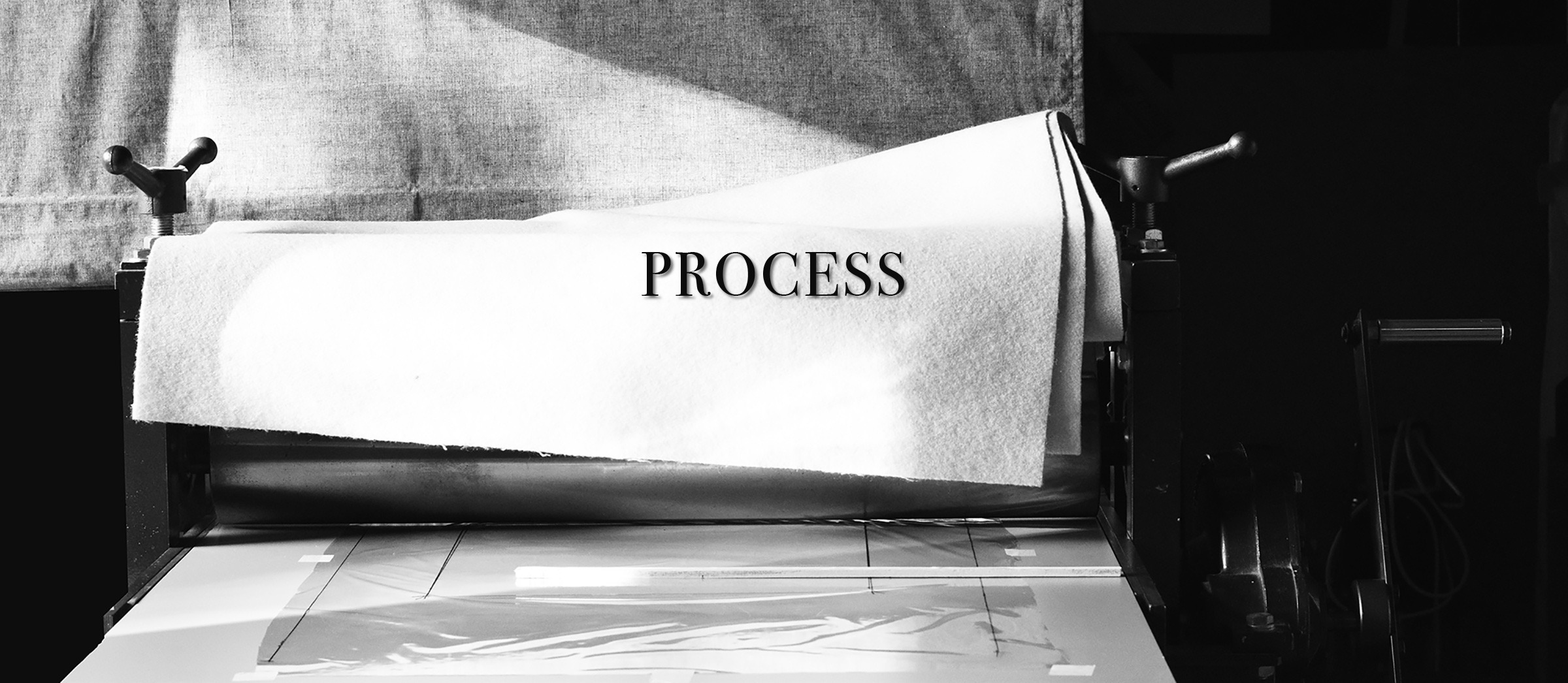


Making a print is a manifold process. In print, the final piece is not generated directly onto a surface as with drawing or painting. Making a print involves the process of transferring a design from a matrix.
Creating a matrix may not be a linear direct process either and will require many stages to resolve the creative intention of an artist. An original print is not merely a copy, but rather an impression of a unique matrix, created and guided by the physical properties of materials the artist works with.
An artist’s print is a way of visualizing an original thought through methods of “manufacturing” and strategic thinking. The making of a print requires both proactive and reactive engagements with material and intellectual, making the process uniquely challenging and rewarding.


Idea is never fixed.
It can be a direction, a scheme, sometimes it could arise from an influence and a reaction.
Idea is the energy core that starts off the vortex in which technical and intellectual elements fall, interact and fuse. Idea is essentially an urge to communicate something pressing to the world; it is also a need to hear back from the world itself.
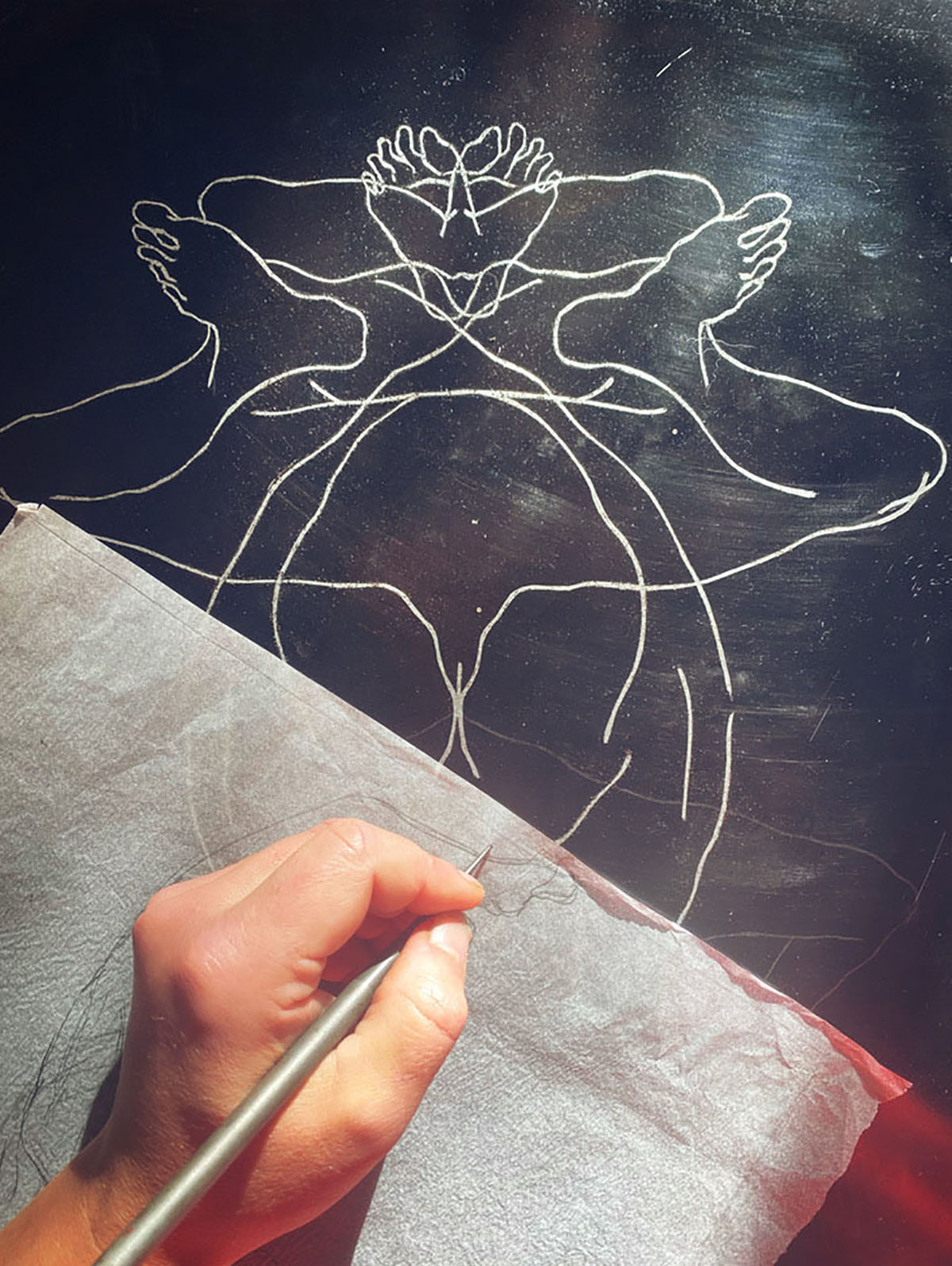

A sketch is a formative map for an idea.
It is where visceral tentatively transforms into visible. It is akin to a playground where ideas get to try out. The aim is to hold onto the initial excitement and curiosity of a thought and start “fleshing” it with the dynamic engaging properties of a form.
And lastly, it is “a brief” for the technical execution stages that follow.


A stage where cerebral dream of a visual illusion gets its functioning form and material components.
Experimenting is a major part still, but the aim is to edit and arrange technical options to create a lean system depicting that illusion that got you excited in the first place. In case of a print, you are balancing both technical execution (the quality and longevity of an impression you will produce) and visual impact. A balanced and considerate choice makes the print beautiful and meaningful.
You want your work to start living its own life after an impression is made.
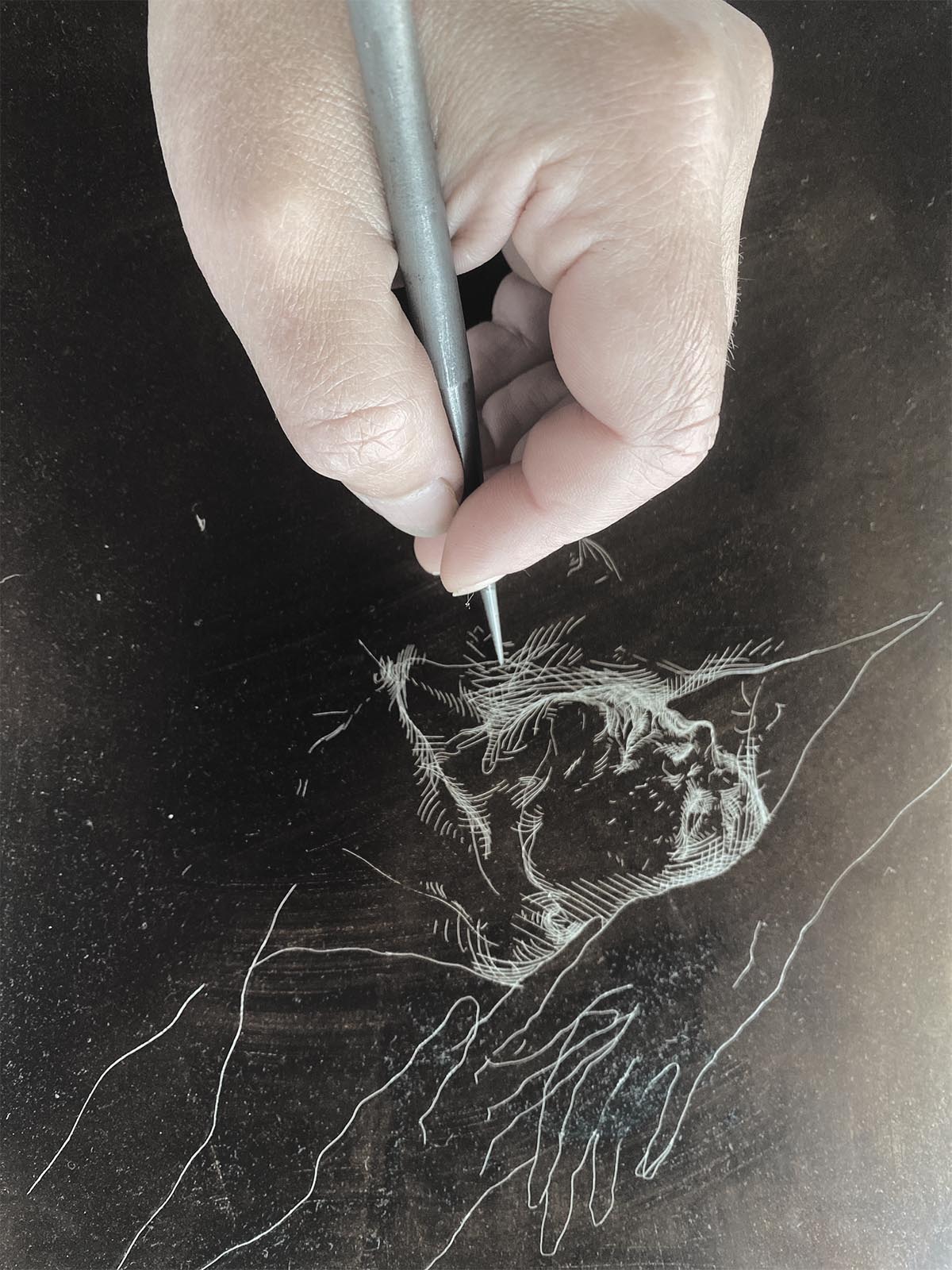

All printmakers tend to develop an unwavering enthusiasm for multiple materials they work with (and their capacity to offer seemingly endless creative possibilities). And although the technical execution, the mastery of handling and manipulating physical matter is important, it is just the means to an end.
A production of a print can be both complex and simple but is ultimately informed and motivated by an ambition to realise an idea.
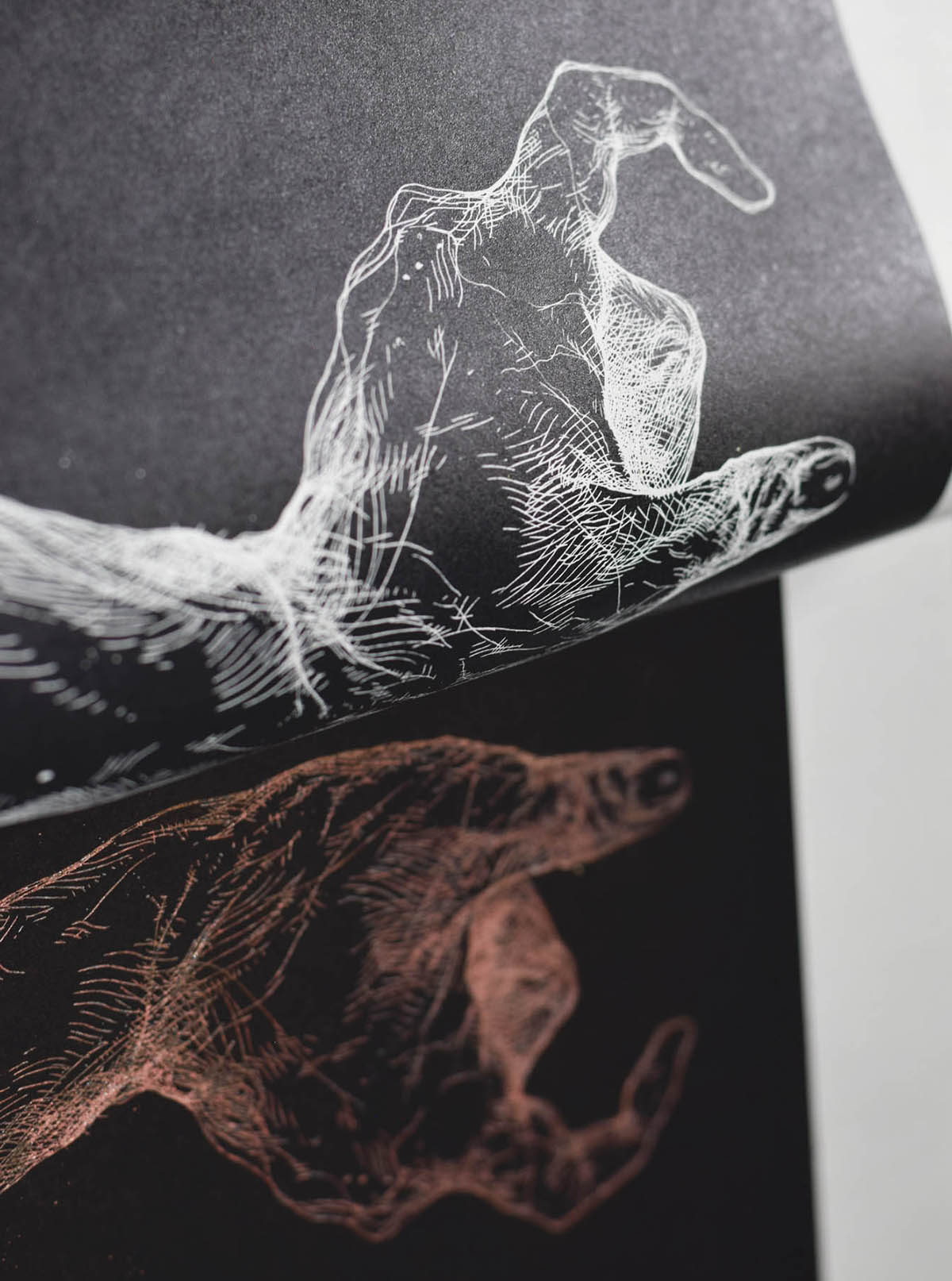

Printmaking engages the artist with rich cultural and material language, which is, simultaneously, built on creative and utilitarian traditions and is also a gateway to imaginative discoveries. The processes of printmaking are deeply rooted in all kinds of manipulation of physical matter and take advantage of and delight in human inventiveness.
Artists “distill and forge” ideas through making, seeking to transform concepts into beautiful and meaningful artefacts. Printmaking hence reflects a basic human need to subjugate matter while remaining in awe of nature’s complexity and intelligence.


Traditionally, metal plates were used to produce stable and consistent impressions.
A metal plate (copper, zinc, aluminum, and steel) can be engraved (by the force of a tool creating grooves on the surface) or etched (where a chemical reaction facilitates the change in the surface layer of a flat plate). Numerous techniques allow printmakers to produce both lines and perceived tone. Working on the surface of a metal plate provides both great resilience and gives simultaneous clarity and fluidity to designs.
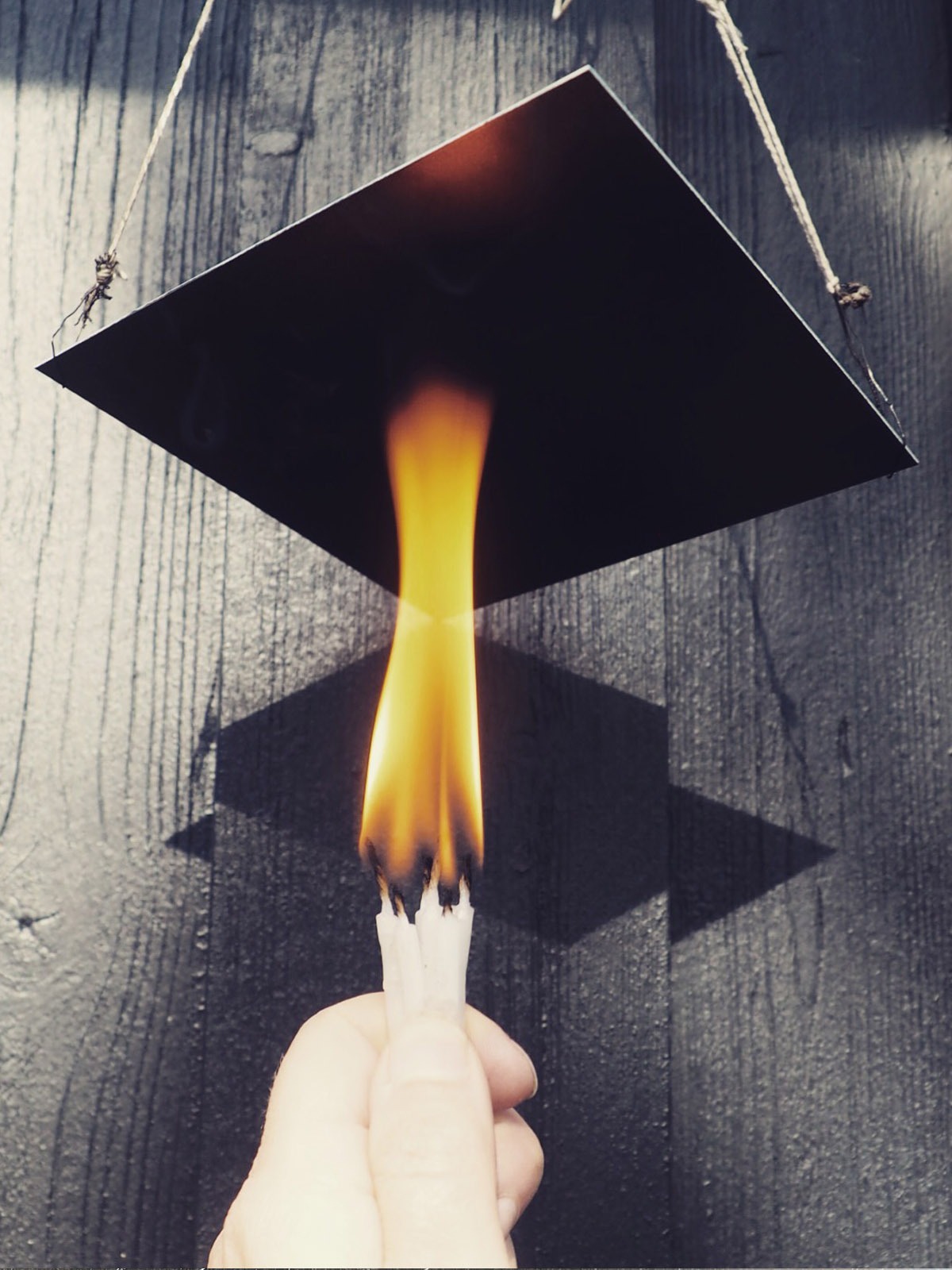

Mesh is what makes silkscreen possible.
Originating from China, silk was traditionally stretched over wooden frames, with a myriad of tiny mesh openings allowing the inks to be pushed through and deposited on a level surface, creating an illusion of lines or planes of tone. These days synthetic materials are commonly used to make silkscreen a versatile, capable, and hardworking medium.
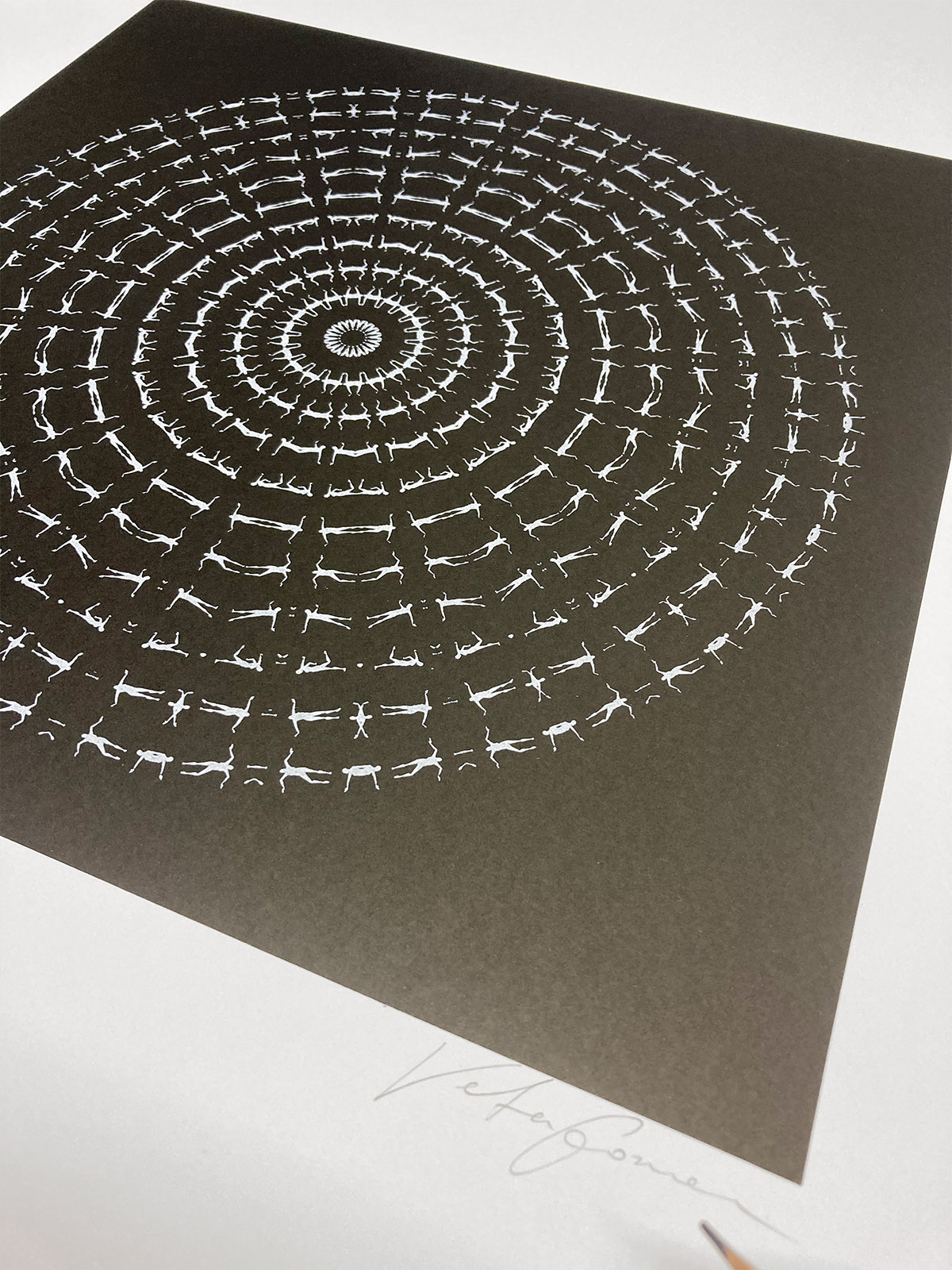

The hard, flat stone surface is responsible for the invention of lithography, the print medium based on the idea that oil and water do not mix. The invention quickly proved technically reliable and took over from etching as a dependable commercial method. In time, stone got phased out commercially and replaced with thin metal plates, yet lithography remained a fascinating medium for the artists experimenting with its enduring qualities – translucency of ink layering, expressive gestural mark-making, slow and thoughtful holistic rituals. Now, the lithographic process relies on commercially prepared pre-sensitized metal plates and photo image transfers. Stone lithography is rare and requires a dedicated specialist setup.
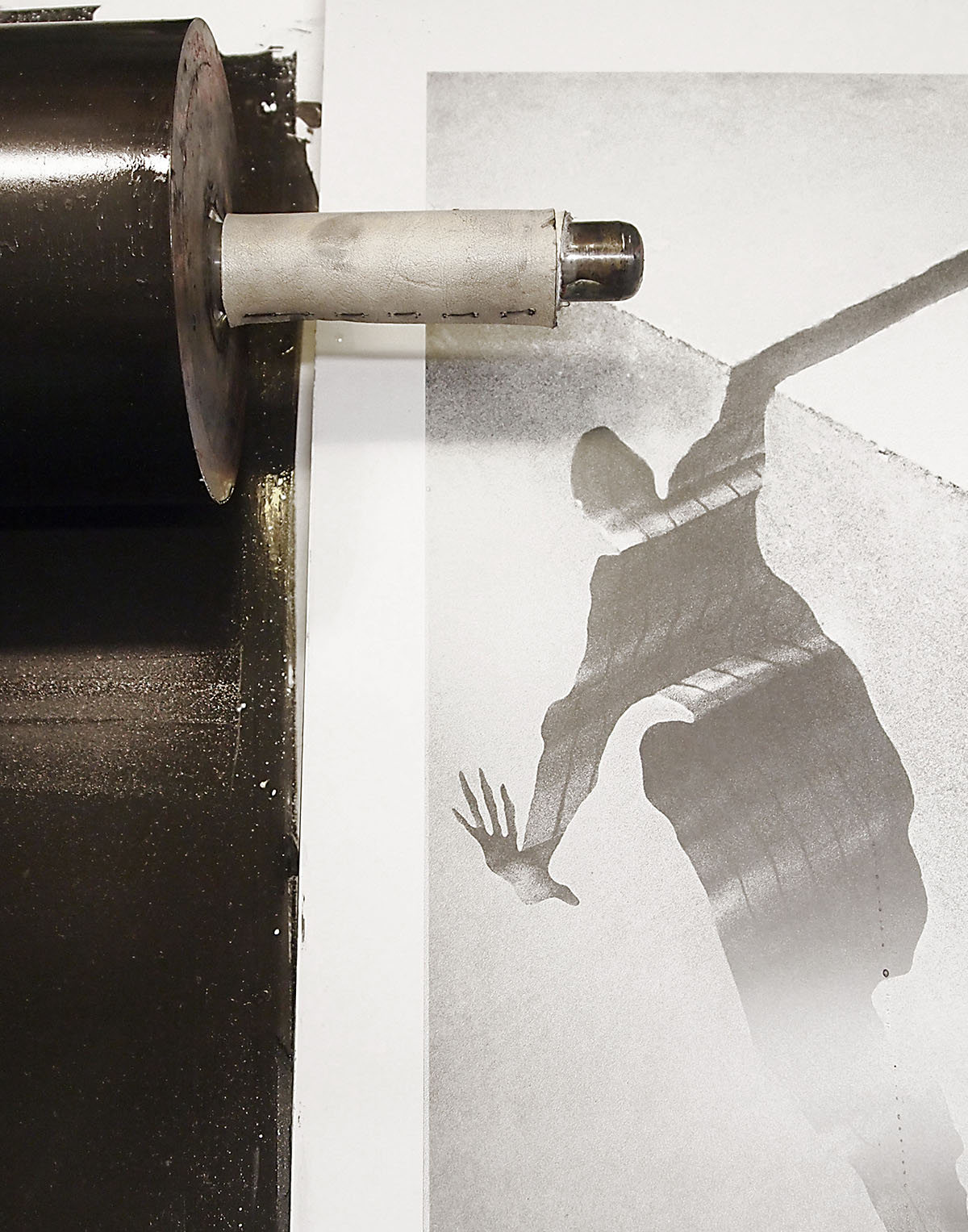

Woodblock carving is probably the oldest type of printmaking.
It requires minimal chemistry during the printing process. Additionally, wood is the most accessible type of matrix surface to work with! The woodcut is versatile and produces impressive results, both executed in miniature format and in oversized work. Different varieties of wood surfaces can be used – from unique slow-growing specialty woodblocks to humble plywood. As long as you can carve – it will print.
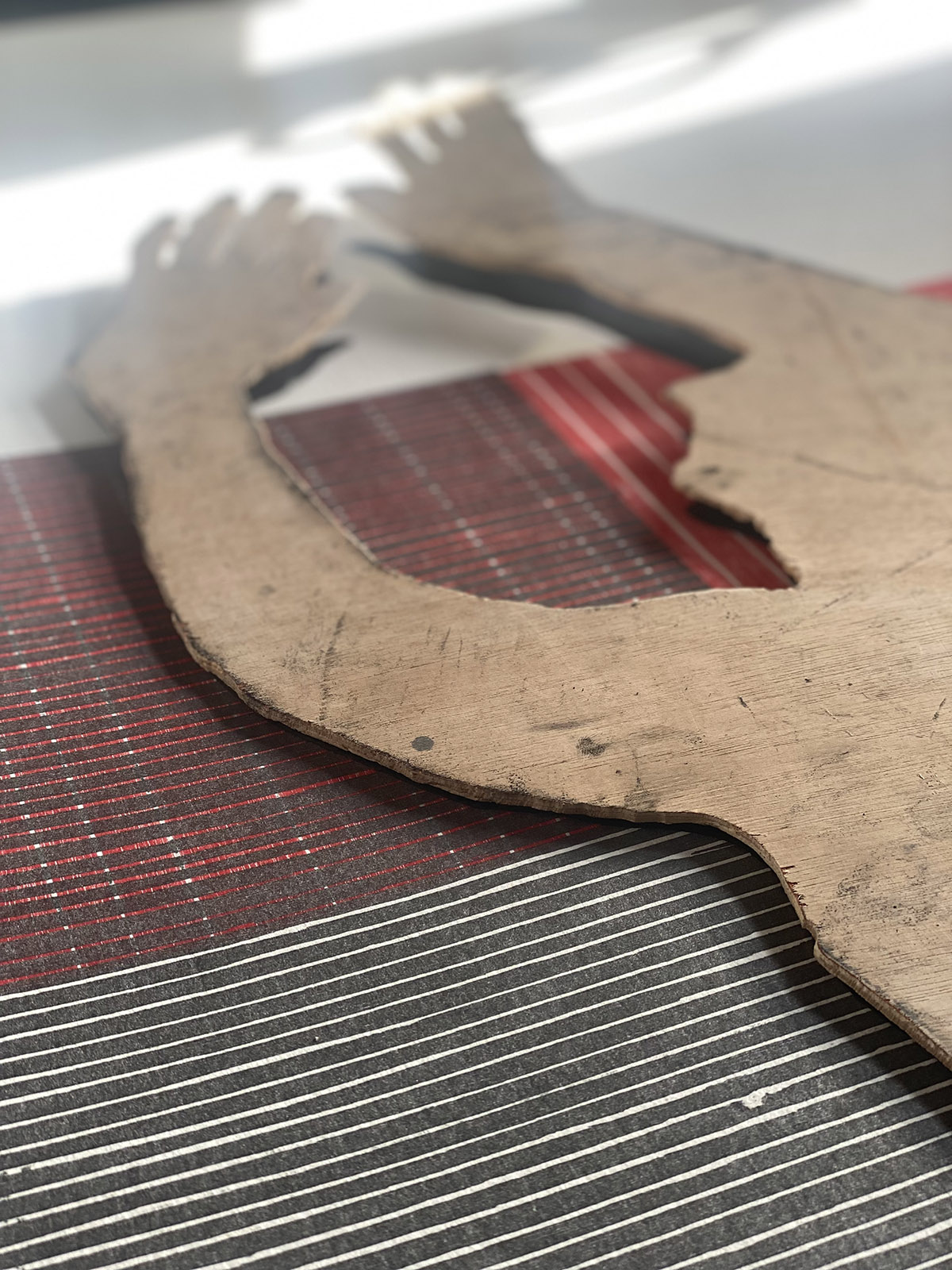

A print is a mirror of a matrix. It is also a reflection of the artist’s intentions and beliefs captured at a particular point in time, with all their collected energy. Every impression taken is a result of all the stages of the process, from conception to printing, with their accumulative properties and motives. Needless to say, very print a unique work of art.


Tools are both the instruments and the orchestra of the studio, creators of marks and character. The tools in the studio range from expensive and specialist – to something mundane and simple, like a nail or a found feather. Some tools, like an etching needle, become friends for life.
I have used the same needle for over 15 years and still love it.


Any flat surface that can carry design for printing is or can become a matrix plate – metal, wood, cardboard, plastic, etc.
As I work between mediums and techniques, choosing a matrix plate is critical for me and sets the tone of how a piece of artwork looks, feels, and interacts with inks and paper.


A moment of impact creates an impression we call “Print” – the pressure applied to transfer the ink from the plate onto a sheet of paper critical to this process. All printmakers have a special sensitivity to the pressure of their presses or any other force application. One could say that pressure is the driving creative force in printmaking.


Paper is undeniably a precious cultural commodity. Humble and mighty, fragile and resilient, endlessly versatile. Every impression is a symbiotic bond of paper and ink, and paper is not just a support act but an equal creative partner.


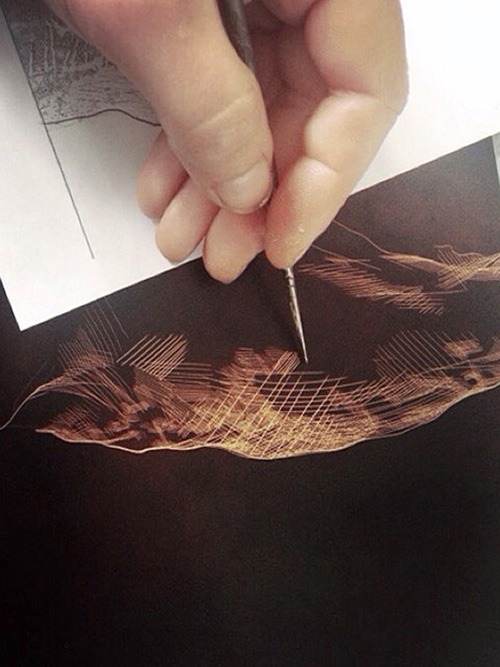
An etching is created by covering a metal plate with an acid-resistant layer of wax called “ground” and drawing a design through the ground using an etching needle. The plate is then dipped in acid, which bites into the exposed lines, thus etching the design into the plate. The plate is then inked and wiped carefully and thoroughly to take off all surplus colour. The plate is positioned on the flat bed of the press and the damp paper is laid over the top. Different ways of manipulating the mark-making process, the action and extent of corrosion, and the printing process give the artist an infinite range of creative opportunities with the etching.
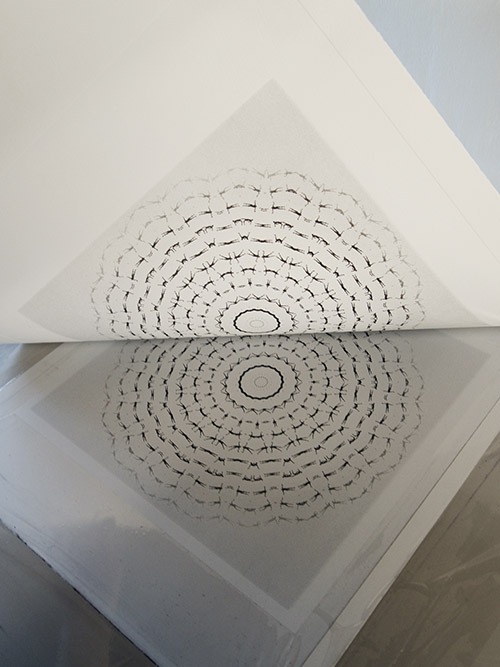
Original lithographs is a process that depends on a simple chemical principle – the mutual antipathy of grease and water. The image is either drawn with greasy materials on a grease-sensitive surface or transferred onto a specially photosensitised plate. When printing ink is rolled on, it adheres only to the sensitised greasy areas of a plate. The inked image is then printed using an offset process. With an offset press, the ink from the plate is transferred to a rubber blanket, and from that blanket onto paper.
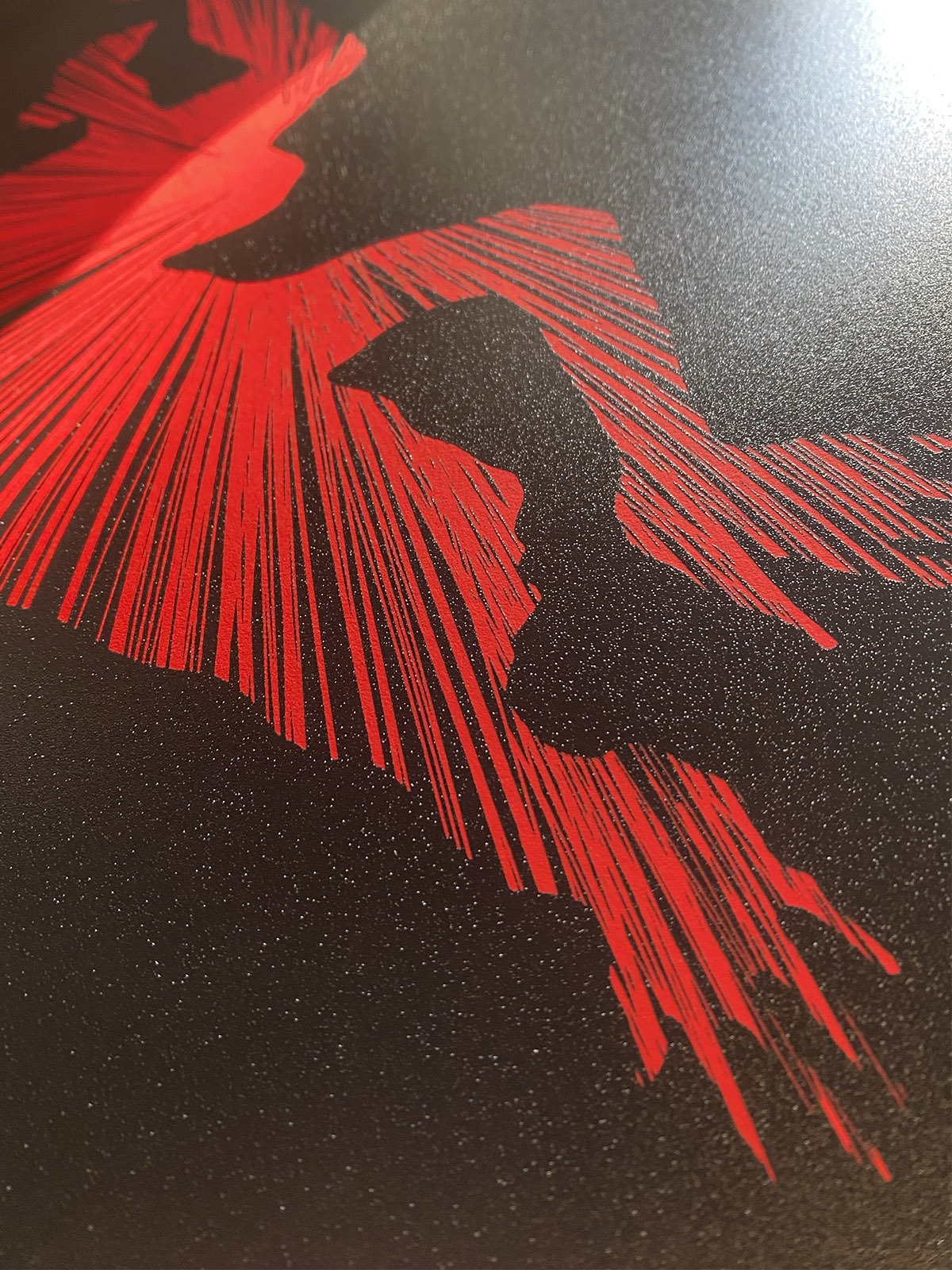
Screenprinting is a printing technique that uses a woven mesh to support an ink-blocking stencil. The stencil forms open areas of mesh that transfer ink onto receiving material by sharp edged tool (squeegee). A squeegee is moved across the screen stencil, forcing ink past the threads of the woven mesh in the open areas. Silkscreen method produces sharp clean images and great for layering the colours and images.

Printmakers, print dealers, and print collectors use several terms that are necessary for the uniform understanding of print values:
Edition: The number of images printed from one plate – stone, block, or the like – is called an edition. The body of the edition is numbered (for example, 1/100 through 100/100) directly on the print. Additional proofs, such as artist’s proofs, are also part of the edition.
Numbering: Numbering indicates the size of the edition and the number of each particular print. Therefore, 25/75 means that the print is the 25th impression from an edition of 75.
Artist’s Proofs: These impressions are in addition to the numbered edition and are so noted in pencil as artist proof or A/P. The commonly acceptable number of artist’s proofs for a given edition is usually around 10% of the total.
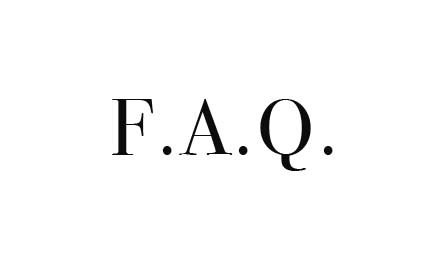
“AN ORIGINAL PRINT IS A WORK OF ART THAT CANNOT BE PRODUCED ANY OTHER WAY”
I tend to work between a variety of printmaking media / methods each complementing the ideas explored at the time. This ensures that the print is not purely individual or unique at a technical level but rather the fusion of ideas with execution means that the print itself could have not been created in any other way. This in a very real sense is what makes the body of work original.
“JUST BECAUSE MULTIPLES ARE INVOLVED IT DOES NOT DENUDE THE WORK OF ITS ORIGINALITY”
The question of confusion comes from how every artist approaches aspects of repetition and deviation, especially when it comes to the editioning of work (making multiple copies). There is a wide scale between systematic control in order to make images alike and the endless creative possibilities that allow for infinite variations. Beyond the rigid tradition of Old Master’s printmaking, these days artists are freer to use printmaking as means of expression rather then means to produce multiples. On a personal note all my prints are hand made by me and no two copies are identical due to the variability of the printmaking process.
“THE PRINTMAKING PROCESSES AND ITS TECHNICAL RIGOUR INFLUENCES THE FINAL MESSAGE”
For me the process of printmaking revolves around its iterative nature, a repeating process where one iteration is used as the starting point for the next iteration. A continual evolutionary process in which each step in the production cycle forges the ultimate output. The medium therefore influences the work and becomes part of the message.
“UNIQUE ARTISTIC INTENTION DRIVES ORIGINALITY”
At the end it is a unique artistic intention that makes a print an original work of art – from conceiving an idea to giving it a form and a physical presence. It is the unique set of artist’s skill, talents and experiences that make the work of art truly original.
“TECHNIQUE OR ‘INSPIRATION’?”
The process is a dialogue / balance between two powerful sides of human nature: instinct and intelligence. Where an artist can be simultaneously an improviser and a constructor. It is the tension between control on the one hand, and an eagerness to accept and embrace mistakes on the other.
“WHY I DRAW WHAT I DRAW AND HOW I DRAW IT…”
Most of my works are drawn freehand directly onto a zinc matrix plate. I do not make changes to my line drawings; I have learnt to trust my hand. I do not use models either. Knowing the physical structure of a body is akin to appreciating the inner workings of a spirit that abides within it. I aim to create a tactile relative to our human experience; to take an intangible and make it into something tangible. To simply transform that which we cannot explain in words and translate it into an experience.